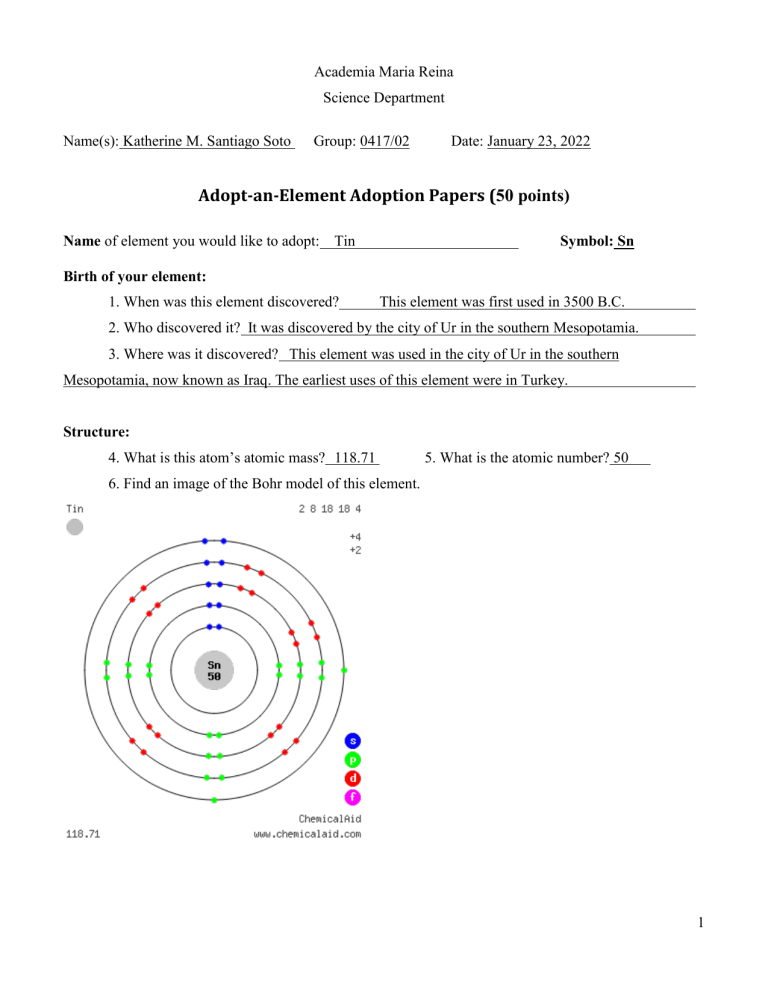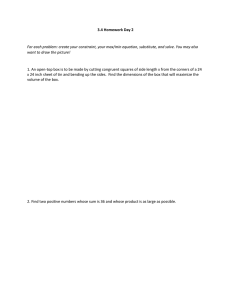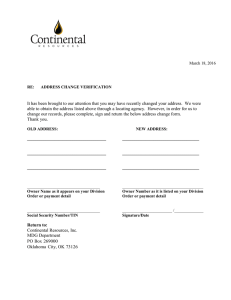Tin (Sn) Element Adoption Papers: Properties & Uses
advertisement

Academia Maria Reina Science Department Name(s): Katherine M. Santiago Soto Group: 0417/02 Date: January 23, 2022 Adopt-an-Element Adoption Papers (50 points) Name of element you would like to adopt: Tin Symbol: Sn Birth of your element: 1. When was this element discovered? This element was first used in 3500 B.C. 2. Who discovered it? It was discovered by the city of Ur in the southern Mesopotamia. 3. Where was it discovered? This element was used in the city of Ur in the southern Mesopotamia, now known as Iraq. The earliest uses of this element were in Turkey. Structure: 4. What is this atom’s atomic mass? 118.71 5. What is the atomic number? 50 6. Find an image of the Bohr model of this element. 1 7. What are the common isotopes of this element? Some common isotopes of this element are Tin-132, Tin-117, Tin-124, Tin-126 Siblings: 8. What group does this element belong to, or what part of the periodic table is he/she located? The element tin is part of the group 14. 9. Does he/she have any famous brothers or sisters (well-known elements in this group or part of the table)? She does have a famous brother known as carbon in her group. 10. What are some common properties of elements in this group or part of the table? Some common properties of elements in this group is that they are metals and they are solids. Chemical and physical properties: 11. density: 13. color: 0 silver white 15. melting point: 231.97 °C (449.54 °F) 12. state at room temperature: solid 13. metal, metalloid, or nonmetal: metal 16. common charge(s) of ion: 4+ 17. How does your element’s position in the periodic table relate to its properties? The element tin is a post-transition metal. 18. What common compounds is your element found in? Tin can combine with other chemicals to form compounds. Combinations with chemicals like chlorine, sulfur, or oxygen are called inorganic tin compounds (i.e., stannous chloride, stannous sulfide, stannic oxide). These are used in toothpaste, perfumes, soaps, food additives and dyes. Home: 19. How or in what form is your element found in nature? It is obtained commercially by reducing the ore with coal in a furnace. 20. How is this element obtained or isolated for use by humans? Tin is found principally in the ore cassiterite (tin(IV) oxide). It is mainly found in the 'tin belt' stretching through China, Thailand, and Indonesia. It is also mined in Peru, Bolivia, and Brazil. It is obtained commercially by reducing the ore with coal in a furnace. 2 21. Where in the world are large amounts (major deposits) of this element found? The largest amount of tin is found in Indonesia, with 117,500 in mine production and 80,933 in smelter production. Special Qualities: 22. Why is your element important? (What is it used for, necessary for, or what danger does it cause?) My element is important because it take high polish and is used to coat other metals to prevent corrosion, such as in tin cans, which are made of tin-coated steel. Alloys of tin are important, such as soft solder, pewter, bronze, and phosphor bronze. A niobium-tin alloy is used for superconducting magnets. The danger that tin does is if you breathe tin it can irritate the nose, throat and lungs causing coughing, wheezing and shortness of breath. It can also cause nausea, vomiting, diarrhea and abdominal pain, headache, fatigue, and tremors. 23. Where might you come in contact with this element or its compounds in Puerto Rico? I might come in contact with tin in the bean cans that we use to cook. 24. What nickname will you give your element if this adoption is granted? If the adoption is granted, I would name my element tinplate. 25. Write a paragraph explaining why you would like to adopt this element and why you would be a good parent for him or her. Use information that you learned about your element to support your request. I would like to adopt this element because it’s a very useful element. With these elements we can protect metals from getting corroded and will last more. Also, with these elements we protect other metals and make them more usable. I would be a good parent to her because I will always have it clean, and I will have ger at room temperature, so it doesn’t meet melting point. 3 Birth Certificate (10 points) Must be on a 6”x 6” in size, neat, colorful, and contain all of the following information: 1) 2) 3) 4) 5) 6) 7) Element name (0.5 pt) Element symbol (0.5 pt) Atomic number (1 pt) Atomic mass (1 pt) # of protons, neutrons & electrons (1 pts) Birth Date – Discovery (1 pt) Artwork relevant to the element (5 pts) All artwork and decorations must communicate relevant information having to do with the element. You may draw pictures, cut out magazine photos, download images from the Internet, or even attach physical items made of the element itself (or one of its compounds). Element Presentation (40 points) You should use the information that you have learned about your element to create a video. Choose the important and interesting information to share with the class and be sure to have at least one visual aide. Visual Aids may include: posters, 3D models, and/or objects that use +your element. Your visual aid will be worth up to 20 points (depending on quality, accuracy, and neatness) and your presentation will be worth another 20 points (depending on accuracy, voice, poise, and enthusiasm – make it interesting). Practice your presentation! Be aware of your voice volume and tone (no one wants to listen to a monotone voice). Watch yourself in a mirror so that you do not fidget or sway. Know your information so you are not looking at the visual aide the entire time. Give the audience eye contact and a SMILE!!! 7e978d20-f565-42dcb577-458fb65c39d7[945].MP4 4


